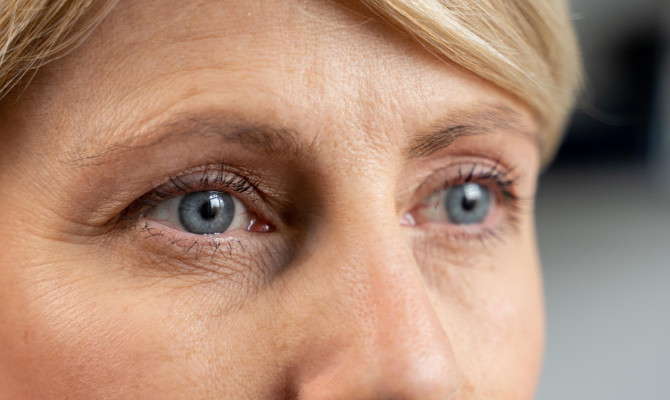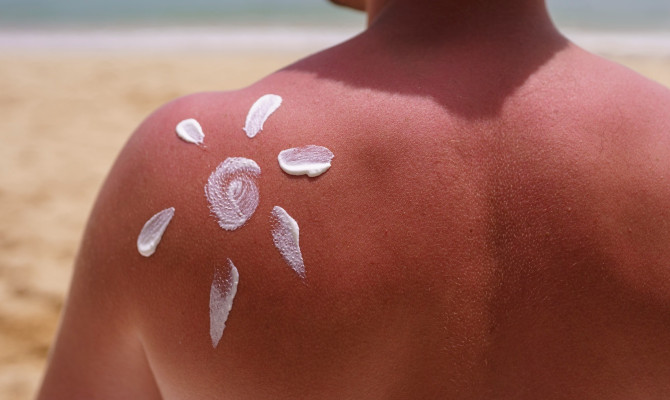Everything You Need To Know About Sun Gazing & Its Benefits

- Sun Gazing
- 18 Oct 2023
Introduction
Sun Gazing
Sun gazing is a contemplative activity that entails directing one’s gaze toward the sun during periods of reduced solar intensity. Nevertheless, it is important to note that medical professionals do not endorse such a practice owing to the potential for enduring harm to the eyes. Sun gazing is a meditative practice that aims to utilize the therapeutic potential of solar energy. Individuals engage in the act of gazing directly at the sun, typically during the periods of sunrise and sunset, with the intention of establishing a connection with its inherent energy.

Nevertheless, the existing body of research does not provide evidence to support the notion that sun gazing offers any health advantages. In fact, engaging in any variant of this practice can lead to irreversible harm to the eyes. In this article, we will explore the potential advantages and disadvantages associated with engaging in safe sun exposure and meditation practices. Additionally, we will consider the potential hazards associated specifically with the practice of sun gazing.
Sun Gazing
Practice of Sun Gazing
- Sun gazing refers to the deliberate practice of exposing one’s eyes to sunlight during specific periods of the day, namely sunrise and sunset, when the sun’s ultraviolet (UV) index is at its minimum.
- Individuals who engage in the practice of sun gazing deliberately focus their gaze toward the sun during designated periods of the day, typically at sunrise and sunset.
- This activity is undertaken with the intention of harnessing solar energy and utilizing it to enhance their overall physical and mental health. 4Sun Gazing | Researched based study from National Institutes of Health
- The process involves positioning oneself outdoors, ideally without footwear and without the use of eyeglasses, contact lenses, or sunglasses, while establishing direct visual contact with the sun.
- Throughout several generations, the practice of sun gazing has been widely regarded as a means of enhancing the soul’s well-being and promoting the feeding of one’s physical, mental, spiritual, and emotional health.
- Nevertheless, it is imperative to give careful thought to the various significant concerns involved with this approach.
What is the best time for sun gazing?
- Ultraviolet (UV) radiation exhibits a near-zero value during these specific temporal intervals due to its increased path length required to reach the observer. 4 Sun Gazing | Researched based study from National Institutes of Health
- When the sun is positioned low on the horizon, its wavelengths must traverse a greater distance through the Earth’s atmosphere, resulting in filtration and scattering before reaching an observer situated at a considerable distance from the Earth.
- This is the reason why ultraviolet (UV) radiation does not pose a risk to individuals or their eyes during the early morning and early evening hours.
How long should I sun gaze?
- In the initial session, novice practitioners commence their practice by directing their gaze toward the sun for a duration of merely 10 seconds.
- The duration is gradually extended by 10 seconds on a daily basis until the optimal time limit is attained.
- There is a divergence of opinions on the appropriate duration for sessions.
- Certain individuals argue that a period of 10 to 15 minutes is adequate, but others express a preference for engaging in extended sessions lasting up to 45 minutes. 4 Sun Gazing | Researched based study from National Institutes of Health
Benefits
What is Sun Gazing Good for?
The practice of sun gazing is purported to yield various advantages, including:
- Revitalization of the intellect
- Physical well-being
- Spiritual vitality
Other meditation methods can likewise have similar advantages, as they too fall under the category of meditation. 2 Benefits | Researched based study from National Institutes of Health Sun exposure has a variety of benefits to the human body, including those associated with sungazing
- Benefits for brain
- Benefits for skin
- Creation of Serotonin
- Generation of melatonin
- Benefits for eyes
Sun gazing benefits for brain
- A 2014 study suggests that engaging in focused attention meditation, such as sun gazing, may be beneficial for individuals experiencing difficulties with concentration or possessing limited attention spans.
Sun gazing benefits for skin
- The process of vitamin D synthesis involves the exposure of the human body to ultraviolet B rays (UVB) emitted by the sun.
- Upon exposure to the substance, an increased production of vitamin D is observed within the human body.
- Adequate vitamin D levels have been associated with various health benefits, including enhanced immune system function, reduced susceptibility to type 2 diabetes, potential anticancer effects, improved bone mineralization, and enhanced skin appearance. 2 Benefits | Researched based study from National Institutes of Health
The creation of serotonin
- The creation of serotonin can be influenced by exposure to sunlight, which has the ability to impact the release of this hormone, commonly referred to as feel-good hormones.
- Serotonin plays a crucial role in the regulation of mood, attention, and emotional stability.
The generation of melatonin
- The generation of melatonin is influenced by factors outside serotonin, as exposure to sunlight has been found to enhance the functioning of the pineal gland.
- The gland in question is responsible for the synthesis and secretion of melatonin, a hormone that plays a crucial role in regulating sleep.
- Engaging in a daily practice of sun gazing for a minimum duration of 30 minutes has the potential to provide positive effects on one’s circadian rhythm, hence enhancing the overall quality of sleep experienced.
Sun gazing benefits for eyes
- The advantages of eye health have been examined via studies, while not yet definitively confirmed, examining the potential correlation between sun gazing and sunlight exposure and a potential reduction in the likelihood of developing myopia or nearsightedness, particularly in youngsters. 2 Benefits | Researched based study from National Institutes of Health
- Engaging in regular sun gazing throughout the periods of sunrise and sunset has the potential to enhance eye health.
- During this period, the ultraviolet (UV) index is at its minimum level and is unlikely to result in any harm to the eyes.
Other benefits of sun gazing include
- The phenomenon of heightened energy levels
- The optimization of the circadian rhythm has been found to result in improved quality and increased depth of sleep. 2 Benefits | Researched based study from National Institutes of Health
- An improved emotional state resulting from an increased synthesis of serotonin and melatonin chemicals.
- Enhanced ocular well-being
- Reduced stress levels
- An enhanced immune system facilitates the ability to combat infections and expedite the process of recovery.
- A reduction in appetite and potential loss of body weight.
- The heightened level of consciousness and enhanced cognitive processes
- The cultivation of a positive mindset and the enhancement of self-confidence.
Safe Methods
Methods for Safely Practicing Sun Gazing
- Prior to engaging in the practice of sun gazing, it is important to acknowledge the absence of scientific substantiation about its safety, irrespective of assertions made by proponents of spiritual well-being. 4 Safe Methods| Researched based study from National Institutes of Health
- In order to maximize the spiritual advantages, practitioners of sun gazing advocate for engaging in direct visual interaction with the sun.
- This entails the act of observing the sun outdoors without the use of corrective eyewear such as eyeglasses, contact lenses, or sunglasses.
- The act of gazing through a window is likewise discouraged by these observers.
- Initiate your practice at a gradual pace and promptly discontinue if any form of discomfort is experienced.
- Engaging in intermittent sun gazing with closed eyelids could potentially offer benefits to individuals who are new to this practice.
- It is advisable to direct one’s gaze toward the sun exclusively during the periods of sunrise or sunset when the ultraviolet (UV) index is comparatively lower.
- Engaging in direct sun gazing during the midday hours has the potential to result in significant harm to the retina.
- Engage in a state of relaxation and consciously do the act of blinking at a frequency that is sufficient to meet your ocular requirements.
- Engage in the aforementioned activities while being barefoot on the ground outdoors, in order to establish a heightened connection with the terrestrial environment.
Once more, it is imperative to acknowledge that engaging in sun-gazing activities carries inherent risks and should be undertaken with personal discretion. Regardless of the time of day, such as early morning or twilight, or even under gloomy conditions, it should not be assumed that lower UV indexes provide adequate protection against the harmful effects of sun exposure.
Risks
Hazards of Sun Gazing & Sun Exposure
The potential risks associated with sun gazing surpass the advantages. Various ocular disorders can arise as a result of exposure to sunlight, regardless of its duration, be it brief or extended.
This encompasses many conditions such as: 1 Risks | Researched based study from American Academy of Ophthalmology
- Photokeratitis
- Solar retinopathy
- Cataracts
- Macular degeneration
- Pinguecula and pterygium
- Ocular malignancies
Photokeratitis
- Often known as sunburned cornea, is a condition characterized by the inflammation and damage of the cornea due to excessive exposure to ultraviolet.
Solar retinopathy
- Sometimes referred to as retina burn, is a condition that occurs when the retina of the eye is damaged due to exposure to intense sunlight or other sources of bright light.
Cataracts
- Cataracts are a common ophthalmic condition characterized by the clouding of the lens.
Macular degeneration
- Often known as age-related macular degeneration (AMD). 1 Risks | Researched based study from American Academy of Ophthalmology
Pinguecula and pterygium
- These are ocular conditions characterized by the presence of growths on the sclera, which is the anatomical term for the white component of the eye.
Ocular malignancies
- Excessive exposure to sunlight has been found to be associated with an elevated susceptibility to the development of ocular malignancies.
- Certain medical disorders have the potential for treatment; nonetheless, failure to promptly acquire appropriate medical attention may result in irreversible ocular harm.
Alternatives
Alternatives to Sun Gazing
There exist numerous other mindfulness techniques that are comparatively safer than engaging in the practice of sun gazing.
Meditation is associated with a multitude of advantages pertaining to spiritual, bodily, and mental well-being. The practice has been shown to enhance self-awareness and reduce stress levels. Additionally, it has the potential to decrease one’s resting heart rate and blood pressure levels. All of these factors contribute to the enhancement of sleep quality, thereby establishing a reciprocal relationship. 3 Alternatives | Researched based study from National Institutes of Health
In addition to conventional mindfulness activities, there are other alternative mindfulness techniques that can be explored. 3 Alternatives | Researched based study from National Institutes of Health
- Engaging in the practice of breathwork: Research findings indicate that engaging in deep breathing exercises, specifically by inhaling deeply and retaining the breath, may have the potential to alleviate stress.
- The act of journaling: This phenomenon is associated with a decrease in stress levels, a reduction in blood pressure, and an enhancement in emotional well-being. Moreover, there is a positive correlation between it and enhanced overall well-being.
- Achieving optimal sleep quality: Ensuring an adequate duration of sleep, ideally 7 hours or more every night, is crucial for maintaining optimal physical and mental well-being.
FAQs
Frequently Asked Questions About Sun Gazing
Q. What to avoid during Sun Gazing?
- The practice of sun gazing can be considered safe, provided that certain guidelines are adhered to.
- It is advisable to engage in this activity exclusively during the hours when UV light levels are minimal, ensuring safety.
- This implies a time frame of no more than 30 minutes following the commencement of sunrise or no more than 30 minutes preceding the onset of dusk. 4 FAQs | Researched based study from National Institutes of Health
- It is strongly advised against observing the sun through any form of medium, including but not limited to magnifying glasses, telescopes, binoculars, or SLR camera lenses.
- These devices focus the solar radiation, resulting in potential ocular damage.
Q. Is sun gazing good or bad for health?
- Indeed, the act of gazing directly at the sun might result in detrimental harm due to the presence of ultraviolet (UV) radiation.
- This is the reason why there exist specific time periods during the day when it is advisable to engage in safe sun gazing, namely, a duration of 30 minutes during sunrise and an additional 30 minutes preceding dusk. 3 FAQs | Researched based study from National Institutes of Health
- Exposure to the sun’s ultraviolet (UV) radiation, particularly during periods of elevated UV index, can potentially lead to many ocular ailments, including cataracts, macular degeneration, photokeratitis (corneal sunburn), solar retinopathy (retinal damage), as well as pinguecula or pterygium, which affect the sclera or the ocular white region.
- Excessive exposure to sunlight also poses a potential danger for the development of ocular cancer.
- Individuals experiencing any of these ocular problems should promptly seek medical intervention. Failure to do so may result in lasting harm to the eyes.
- It is advisable to refrain from engaging in sun-gazing during the midday hours, as there exists a potential for substantial harm to the retina.
Takeaway
Sun Gazing: Adhere to Safety Measures
To engage in the practice of sun gazing, it is imperative to adhere to safety measures in order to harness beneficial energy without causing harm to the eyes. There is a paucity of scholarly study pertaining to the practice of sun gazing meditation and its potential physiological and psychological advantages, primarily due to the inherent risks associated with this practice. The majority of the advantages can be derived from engaging in non-sun gazing meditation, spending time in outside environments, and appreciating the natural world. There is a widespread belief that establishing a connection with natural forces can yield profound healing effects, including both bodily and emotional well-being. The majority of medical professionals do not endorse the practice of sun gazing and instead advise exploring alternative meditation techniques, citing both immediate and long-term hazards to ocular health.
Any feedback on this article?
 This Articles content was accurate
This Articles content was accurate Very Informative Article
Very Informative Article I have a question or a comment
I have a question or a comment
 This article contains inaccurate content
This article contains inaccurate content This article was not helpful
This article was not helpful I have a question or a comment
I have a question or a comment
We appreciate your helpful feedback!
Checkout our social pages
References
-
American Academy of Ophthalmology
Risks
-
National Institutes of Health
Benefits
-
National Institutes of Health
Alternatives | FAQs
-
National Institutes of Health
Sun gazing | Safe Methods | FAQs





































